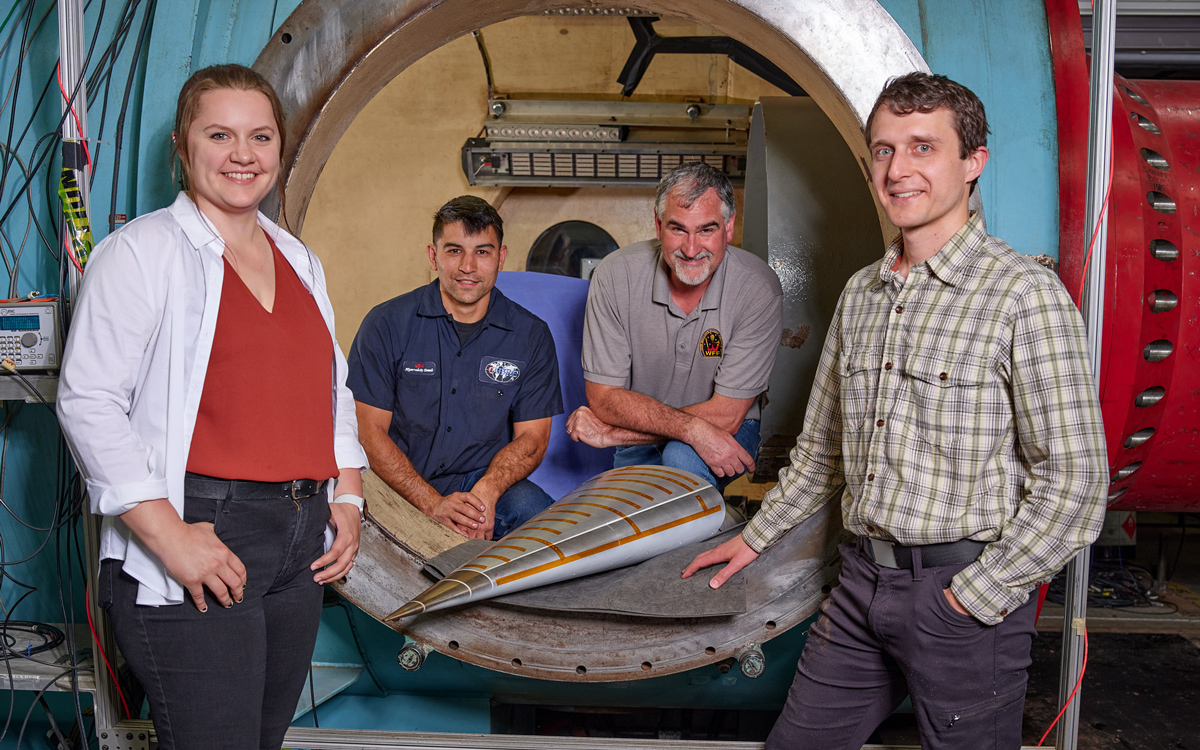World-Class Hypersonics
The CUBRC Aerosciences sector provides the Government and its contractors with critical ground test data to validate the reliability and operational capabilities of hypersonic flight vehicles prior to flight. This data is provided by unique, world-class families of ground test capabilities. These ground test capabilities have been developed and designed to replicate flight enthalpies (velocities) and altitudes where Government and commercial hypersonic systems operate and require detailed evaluation.
CUBRC Aerosciences sector provides essential ground test data for hypersonic flight vehicles and precision evaluation.
The LENS family of facilities represents the nation’s largest range of velocity versus altitude capability for the evaluation of Government hypersonic offensive and defensive flight systems, Government and commercial flight, and access to space vehicles and planetary entry platforms. The LENS capability has its roots in the work performed by the Cornell Aeronautical Laboratory in the 1950s to develop a true temperature hypersonic ground test facility capable of answering the nation’s needs for science and technology (S&T) and testing and evaluation (T&E). Our team continues to evaluate new capabilities, test techniques and diagnostics to meet future testing requirements.

LENS 48-Inch Tunnel
The LENS 48-inch Tunnel has been in continuous operation since the 1950s performing thousands of test points, from studies of fundamental hypersonic flow physics to critical evaluation of hypersonic flight systems. The LENS 48-inch tunnel is capable of unique altitude versus velocity matching freestream conditions from a Mach number of 6 to 9 and Mach number versus Reynolds number matching conditions from Mach 6 to 18.
LENS I
This facility, completed in 1992, was specifically designed and fielded to allow the full-scale testing and evaluation of atmospheric hypersonic interceptor systems at matching altitude versus altitude conditions. It has since been employed in critical path hypersonics ground testing for the Department of Defense, Department of Energy, NASA and industrial partners. The LENS I hypersonic ground test facility is capable of unique altitude versus velocity matching freestream conditions from a Mach number of 6 to 10 and Mach number versus Reynolds number matching conditions from Mach 6 to 18.
LENS II
Following the completion and operation of LENS I, the need to ground test larger flight articles at lower Mach numbers and velocities led to the design and fielding of the LENS II facility in 1998. LENS II, like LENS I, has been employed extensively by the Government and industry to validate the functionality and reliability of hypersonic flight systems prior to high profile, highly complex flight tests. The LENS II hypersonic ground test facility is capable of unique altitude versus velocity matching freestream conditions from a Mach number of 3 to 8 and Mach number versus Reynolds number matching conditions from Mach 3 to 10. When LENS II is operated as a Ludwieg tunnel, Mach numbers and velocities down to Mach 2 are achievable.
LENS XX
The most recent addition to the LENS family of ground test facilities is LENS XX, added in 2008. To achieve the highest enthalpies (velocities) associated with high altitude reentry and flight in clean air conditions, the LENS XX facility was developed, designed and fielded to provide access to velocities from 10k ft/sec to 30k ft/sec to evaluate the high temperature (“Real Gas”) effects associated with high hypersonic flight. LENS XX is a one of a kind hypersonic expansion driven wind tunnel that represents the nation’s only capability to achieve these hypervelocity conditions to validate the design and capability of flight vehicles that are required to operate at extreme speeds and altitudes.

